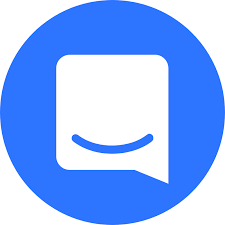 Heads up! New pricing takes effect from November 1st, 2025 onwards.
Learn More
Heads up! New pricing takes effect from November 1st, 2025 onwards.
Learn More


 Heads up! New pricing takes effect from November 1st, 2025 onwards.
Learn More
Heads up! New pricing takes effect from November 1st, 2025 onwards.
Learn More


Are you making IT support harder than it needs to be? If your team and end-users are still relying on a single channel for support, you’re crippling efficiency, frustrating users, and slowing down resolutions.
Think about it: your users aren’t all the same. Some live in Microsoft Teams, others prefer email, and some are always on the go. Forcing everyone into a single support channel is like trying to fit a square peg into a round hole—it doesn’t work.
Whether it’s seamless ticketing in Microsoft Teams, dedicated desktop experiences, mobile support for on-the-go professionals, or a smarter transition away from slow email workflows—DeskDay covers it all.
This multi-channel approach isn’t just a fancy feature—it’s the key to better, faster, and more effective support. But here’s the catch: it only works if you actually use it.
This guide is here to wake up your IT strategy and show you how to master every DeskDay channel to unleash the full potential of your support system. Let’s dive in.
If your users already rely on Microsoft Teams for internal communication, why ask them to open another app or send an email for IT support? With IT-Connect for Teams, they can raise tickets directly within Teams, making support more integrated and hassle-free.
How to maximize adoption:
Some users need a centralized, distraction-free experience for IT support, and the IT-Connect Desktop App delivers exactly that. Unlike traditional ticketing systems that require multiple logins and endless browser tabs, the Desktop App provides an all-in-one hub that simplifies support interactions. With its intuitive interface, users can:
Encourage IT staff to offer personalized onboarding sessions for high-usage end-users. This not only boosts adoption but ensures they maximize the Desktop App’s potential for faster, more efficient support experience.
For users on the move, the IT-Connect Mobile App ensures uninterrupted access to IT support, eliminating the need to be tied to a desk or a corporate network. It acts as a lifeline for IT assistance, allowing users to:
With IT support in their pockets, users no longer have to wait until they’re back at their desks to get help. Whether they’re working remotely, traveling, or in the field, they can get assistance exactly when they need it.
While email has been a traditional channel for IT support, it’s no longer the most efficient. Let’s be real—email is slow, clunky, and not built for modern IT support. However, it still has a place in your support ecosystem for specific use cases.
Think of it as the “snail mail” of IT: useful for structured, long-form communication, but terrible for urgent needs or real-time collaboration. Relying on email alone? You’re setting your team up for bottlenecks, unnecessary delays, and a frustrating back-and-forth experience.
Slowly transition users away from email as the primary support channel and encourage them to adopt IT-Connect apps for real-time responses and faster resolutions.
How to make the shift:
Your IT team doesn’t have to be chained to their desks. The IT-Connect Mobile App for Techs is a game-changer that gives IT support teams complete mobility and flexibility. Whether on-site, traveling, or working remotely, techs can:
The best IT support isn’t just fast — it’s accessible, seamless, and proactive. In today’s fast-paced IT environment, relying on a single communication channel is a recipe for inefficiency.
Users expect instant solutions, techs need real-time updates, and MSPs must maintain high service quality while handling multiple clients. By leveraging all of DeskDay’s multi-channel capabilities, you create a fluid, responsive, and customer-first support system that benefits everyone involved.
A single-channel support system is outdated. If your MSP is still tied to one primary method of communication, you’re limiting growth, reducing efficiency, and creating unnecessary friction. It’s time to step up your IT support game and enable every channel today for the ultimate DeskDay experience!
DeskDay offers multiple channels including Microsoft Teams (IT-Connect), Desktop App, Mobile App, and traditional Email, giving clients options that match how they work.
Because people have different preferences and contexts—some live in Teams, some are on mobile, others prefer desktop. Different channels reduce friction, speed up ticket submission, and improve satisfaction.
MSPs can promote those channels through internal communication, training sessions, making setup easy, and showing how much faster and seamless support is when people don’t have to switch tools.
Yes. DeskDay is built so that communication, updates, and even status tracking work consistently whether users submit via Teams, mobile app, desktop app, or email. No more fragmenting the support experience.
Best practices include: standardizing responses and templates across channels; ensuring notification settings are tuned so techs don’t miss messages; onboarding users onto preferred channels; and monitoring metrics across channels to see which are working best.